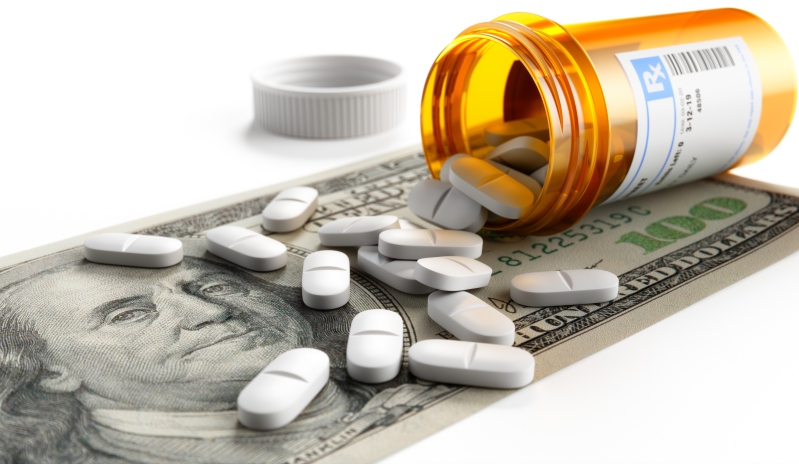
Scholar argues that reducing pricing for prescription drugs may increase innovation.
Nearly 30 percent of American adults report not taking medication because of its high cost. Compared to 32 other countries, the prices for prescription drugs in the United States are 256 percent higher. The U.S. government does not regulate the price of prescription drugs, leaving pharmaceutical companies to set costs at levels that benefit their bottom line.
In a recent report for the Center for American Progress, health care policy analyst Thomas Waldrop suggests that the United States should adopt a value-based pricing system to ensure reasonable drug prices and access to medication.
Waldrop explains that high drug prices stem from the patent protection the U.S. government gives pharmaceutical companies and the lack of negotiation opportunities. Pharmaceutical companies receive market exclusivity, most commonly for five years, after the drug is approved by the U.S. Food and Drug Administration (FDA). During this time, other companies cannot produce a generic version of the approved drug. Once generic versions are produced and enter the market, the price of a medicine typically plummets.
Pharmaceutical companies have extended their monopoly on certain drugs by paying generic manufacturers to delay market entrance. In addition, companies can use intellectual property law to extend their patent protection. Patent protection only lasts for a finite amount of time. Drug companies, however, can tweak minor parts of a drug to establish a new patent worthy of a new protection period.
Health insurance providers do not alleviate the cost burden on patients. The Medicare Modernization Act of 2003 prohibits Medicare from negotiating the prices of drugs for Medicare patients.
Private health care insurance providers can negotiate the prices of prescription drugs, but patients still feel the weight of these high prices in their insurance premiums and out-of-pocket costs. The nature of the product leaves patients with few choices: either purchase the drug at an overcharged price or forgo the medicine and suffer serious health effects. Medicine can be essential to a patient’s life, often leaving buyers without negotiation power that may exist in other, less essential industries.
Waldrop argues that the high price of prescription drugs does not lead to better quality, more efficient, more accessible, or more innovative drugs. Drug companies typically invest the profits from high drug costs into research and development for other drugs from which they can yield the greatest profit, rather than drugs that patients need the most. Drug companies often invest in research and development for new drugs that differ only slightly from already existing drugs, dubbed “me-too” drugs. “Me-too” drugs do not lower prices like generic drugs do because they generally serve very similar purposes as the drugs already on the market. A vast majority of drugs approved by FDA fall into this “me-too” category.
A report by the U.S. House of Representatives Committee on Oversight and Reform found that, from 2016 to 2020, the largest pharmaceutical companies spent $56 billion more on stock buybacks and dividends than research and development. These companies also devoted “a significant portion” of their research and development budget to “finding ways to suppress generic and biosimilar competition while continuing to raise prices, rather than on innovative research,” according to the Committee.
Most true innovation in drug development comes from federal investments. Waldrop cites a 2017 study finding that every new prescription drug approved from 2010 to 2016 derived in part from research supported by federal funding.
To meet the needs of U.S. patients, Waldrop argues that the U.S. government should regulate prescription drug prices using a value-based pricing system. Value-based pricing determines the cost of a drug by the benefit it provides to patients in relation to existing drugs. Benefit can be determined by several factors, including efficiency, innovation, and accessibility.
This system awards a drug with a price consistent with the value it adds to society, rewarding novel drugs with high prices but preventing arbitrarily and inaccessibly high valuations that pharmaceutical companies currently assign. Waldrop cites the changes that Germany and Australia have made to implement value-based pricing systems and the resulting decrease in prices and spending on prescription drugs.
Waldrop argues that value-based pricing can shift incentives in the pharmaceutical industry to improve the health of patients. Waldrop explains that value-based pricing can reduce prices of drugs that lack proven benefits. The cost of “me-too” drugs, for example, which traditionally lack proven benefit, would plummet to their relative value—often akin to generic brands—encouraging companies to redirect research and development to novel drugs.
Instead, value-based pricing would encourage research into health conditions that are historically unresearched and underserved. Many of these diseases impact marginalized individuals at a disproportionate rate. Waldrop contends that implementing a value-based pricing system would address pressing equity concerns.
Waldrop also explains that the United States lacks the information needed to perform value-based assessments on prescription drugs. Currently, the federal government lacks a detailed, centralized review on how drugs are prescribed, dispensed, and used. FDA collects information on drug efficacy and safety, evaluating if drugs are more effective than a placebo. FDA does not, however, conduct a comparative analysis with other drugs necessary for a value-based pricing system.
Waldrop argues that with better data collection, the U.S. government could implement a value-based pricing system for prescription drugs. Pricing drugs based on their value to patients would increase accessibility of prescription drugs, promote drug innovation, and better serve the needs of U.S. patients.



